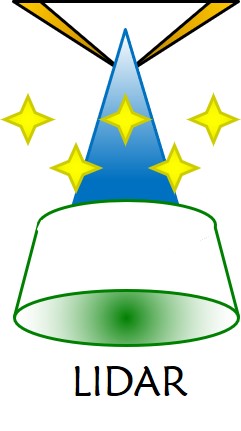Airbone aerosol Raman lidar
Few airborne aerosol research experiments have deployed N2-Raman lidar despite its capability to retrieve aerosol optical properties without ambiguity and help to identified the atmospheric vertical strutures. It is possible by using specific flight plans and appropriate algorithmic approach, aiming to solve the notorious instability of the airborne lidar inversion. One of the fundamental vertical structures in both meteorology and climatology is the planetary boundary layer where the majority of water vapour is trapped during the day.

Atmospheric aerosol is a driver of air quality and climate change. Yet, it is one of the least known components of the atmospheric radiative balance, as already pointed out by the Intergovernmental Panel on Climate Change. The properties of atmopheric aerosols are closely linked to the water cycle in the atmosphere, where they serve in particular as condensation nuclei for cloud formation.









